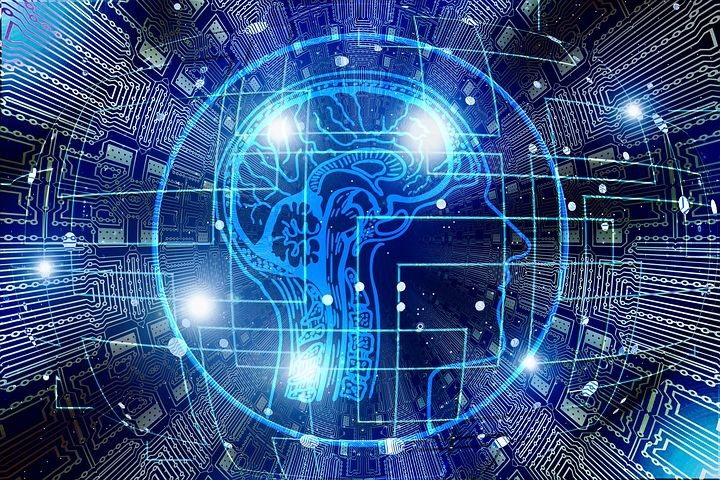The integration of AI in aerospace component inspection is transforming the industry by enhancing safety and efficiency. As aerospace enthusiasts and professionals explore the future of aviation, the role of artificial intelligence in ensuring the reliability of aircraft components becomes increasingly crucial. This article delves into the ways AI is reshaping component inspection and its impact on the aerospace sector.

The Importance of Component Inspection in Aerospace
Component inspection is a vital process in aerospace, ensuring that every part of an aircraft meets stringent safety and performance standards. This meticulous inspection process is essential to prevent failures and ensure the safe operation of aircraft. Traditionally, inspections have relied heavily on human expertise, but the advent of AI is bringing about significant changes.
How AI Enhances Inspection Capabilities
AI technologies are revolutionizing component inspection by providing advanced tools for defect detection, analysis, and prediction. Machine learning algorithms can process vast amounts of data from sensors and cameras, identifying anomalies that may be missed by human inspectors. This not only improves accuracy but also speeds up the inspection process.
Machine Learning in Defect Detection
Machine learning models are trained to recognize patterns and detect defects in components with unprecedented precision. These models analyze images and sensor data, identifying even the smallest irregularities that could compromise safety. This capability is particularly valuable in detecting hidden defects that are not visible to the naked eye.
Predictive Maintenance with AI
AI is also playing a crucial role in predictive maintenance. By analyzing historical data, AI systems can predict when a component is likely to fail, allowing for proactive maintenance. This not only reduces downtime but also extends the lifespan of components, leading to cost savings and improved operational efficiency.
Benefits of AI in Aerospace Component Inspection
The adoption of AI in component inspection offers numerous benefits to the aerospace industry. These include improved accuracy, reduced inspection time, cost savings, and enhanced safety. AI-driven inspections ensure that components meet the highest standards, minimizing the risk of failures and accidents.
Improved Accuracy and Reliability
AI systems are capable of processing and analyzing data with a level of precision that far exceeds human capabilities. This results in more accurate and reliable inspections, reducing the likelihood of overlooking critical defects. As a result, aircraft components are thoroughly validated, ensuring they meet safety and performance standards.
Cost Savings and Efficiency
By automating the inspection process, AI reduces the time and resources required for component inspections. This translates to cost savings for aerospace manufacturers and operators. Additionally, the ability to predict maintenance needs further enhances efficiency by minimizing unscheduled downtime and optimizing maintenance schedules.
Challenges and Considerations
While the benefits of AI in aerospace component inspection are significant, there are also challenges and considerations to address. These include the need for high-quality data, the integration of AI systems with existing processes, and ensuring the reliability and security of AI technologies.
Data Quality and Availability
AI systems rely on large datasets for training and analysis. Ensuring the quality and availability of data is crucial for the success of AI-driven inspections. Poor quality data can lead to inaccurate predictions and unreliable results, highlighting the importance of robust data management practices.
Integration with Existing Systems
Integrating AI technologies into existing inspection processes requires careful planning and collaboration between AI experts and aerospace engineers. Seamless integration is essential to maximize the benefits of AI while maintaining the integrity and reliability of inspection procedures.
Ensuring AI Reliability and Security
The reliability and security of AI systems are paramount in aerospace applications. Ensuring that AI technologies are robust, secure, and resistant to cyber threats is essential to maintain confidence in AI-driven inspections. This requires ongoing research and development to address potential vulnerabilities.
The Future of AI in Aerospace
As the aerospace industry continues to evolve, the role of AI in component inspection is expected to grow. Advances in AI technologies will lead to even more sophisticated inspection tools, further enhancing safety and efficiency. The future of aerospace inspection lies in the continued development and integration of AI-driven solutions.
Emerging AI Technologies
Emerging AI technologies, such as deep learning and neural networks, hold great promise for the future of aerospace inspection. These technologies will enable more complex analysis and decision-making, paving the way for autonomous inspection systems that operate with minimal human intervention.
Collaboration and Innovation
Collaboration between aerospace companies, AI developers, and regulatory bodies will be crucial to the successful implementation of AI technologies. By working together, stakeholders can address challenges, drive innovation, and ensure that AI-driven inspections meet the highest standards of safety and reliability.
Conclusion
The integration of AI in aerospace component inspection is revolutionizing the industry by enhancing safety, efficiency, and reliability. As AI technologies continue to advance, the aerospace sector will benefit from improved inspection processes, predictive maintenance capabilities, and cost savings. By embracing AI-driven solutions, the industry can ensure the continued safety and performance of aircraft components.

FAQs
What is the role of AI in aerospace inspection?
AI enhances aerospace inspection by improving accuracy, speeding up the process, and enabling predictive maintenance through advanced data analysis.
How does AI improve defect detection?
AI uses machine learning algorithms to analyze data and detect defects with high precision, identifying anomalies that may be missed by human inspectors.
What are the challenges of implementing AI in aerospace?
Challenges include ensuring data quality, integrating AI with existing systems, and maintaining the reliability and security of AI technologies.
Learn more about AI in aerospace Read about the future of AI in aerospace AI in Air Traffic Control Language Processing in Cockpits AI’s Role in Warfare

